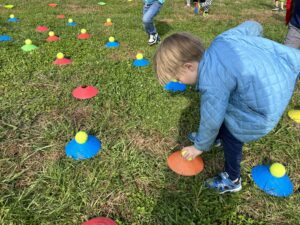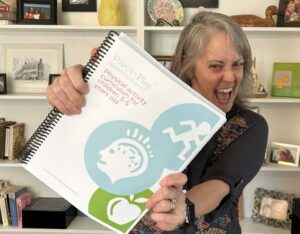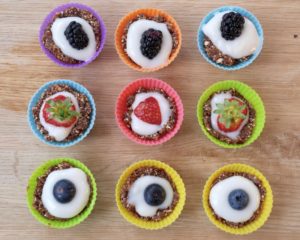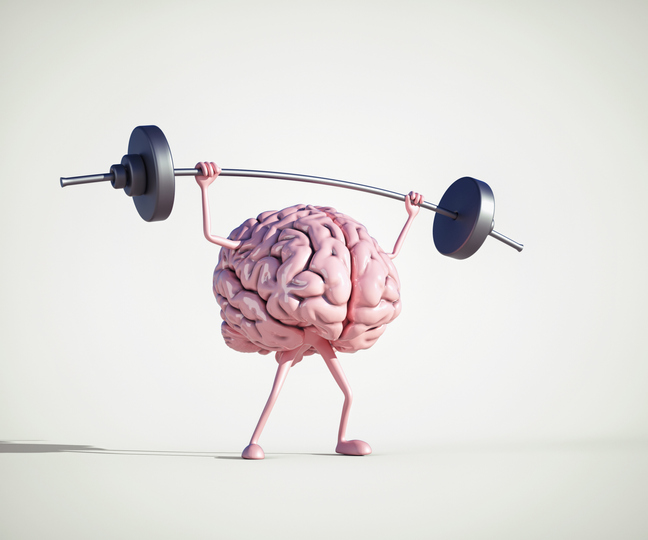As an adult, you may be an avid golfer or pickleball fanatic. You may be or have been a musician or even a knitter. These may seem like they have nothing to do with each other, but they all require three of the Pivot to Play® Strengths and Skills: crossing the midline, grip strength and eye-hand coordination.
Through the trial and error of our childhood play (musical, leisure or physical) we strengthened those three skills when we crossed the monkey bars, crawled under a fence, swung a wiffle ball bat, and wiped tables or blackboards. But the sedentary nature of children’s school and free time means these skills aren’t being developed as they should. It isn’t happening just in my neighborhood. It is happening in yours too. Which means we have a national epidemic of physical inactivity that is crossing every race, religion, and socio-economic background. And it is having a negative impact on how our children learn.
Though crossing the midline, grip strength and eye-hand coordination seem like they are only sports skills, needed for an illustrious athletic career spanning high school, college, and maybe more, I cannot be more clear on this point: sports is the gravy. When children don’t have ample time for play they fail to appropriately develop these skills. This makes school and learning harder than it needs to be.
How?
Grip Strength: in order to hold a pencil and manipulate it across a page, we must have strong fingers and hands. Strong fingers and hands mean the brain doesn’t have to work as hard to control the pencil because strength allows it to be automatic. So the brain can do other things like listen to directions from the teacher, or manipulate concepts into written word.
hands. Strong fingers and hands mean the brain doesn’t have to work as hard to control the pencil because strength allows it to be automatic. So the brain can do other things like listen to directions from the teacher, or manipulate concepts into written word.
Eye-Hand Coordination: in order to put words to paper, the hands and eyes must work together. When the brain has to waste time concentrating on controlling the hands to write, then learning to spell is harder, taking tests is more challenging and concepts will take longer to form on the page in written language.
 Crossing the Midline: when we cross the midline, we bring one appendage across the center of the body. More subtly, we also cross the midline when we move one side of the body because it is controlled by the opposite side of the brain. We can double this effect when we move the two sides of the body independently like crawling or climbing. Crossing the midline requires the brain’s two halves to have a delicate, deliberate, and highly coordinated dance in order to have success in the physical execution. This dance requires strong communication between the two halves of the brain. The more the two halves communicate the stronger the connection between the two. And the stronger the connection, the easier it is to noodle out problems, as well as think creatively and critically. Children need the two sides of the brain to work closely together in order to tackle math or science problems, reason through discussions, and follow the steps of logical thinking. Without this skill, true success in school is more challenging than it needs to be.
Crossing the Midline: when we cross the midline, we bring one appendage across the center of the body. More subtly, we also cross the midline when we move one side of the body because it is controlled by the opposite side of the brain. We can double this effect when we move the two sides of the body independently like crawling or climbing. Crossing the midline requires the brain’s two halves to have a delicate, deliberate, and highly coordinated dance in order to have success in the physical execution. This dance requires strong communication between the two halves of the brain. The more the two halves communicate the stronger the connection between the two. And the stronger the connection, the easier it is to noodle out problems, as well as think creatively and critically. Children need the two sides of the brain to work closely together in order to tackle math or science problems, reason through discussions, and follow the steps of logical thinking. Without this skill, true success in school is more challenging than it needs to be.
How do children build these three skills? In the physical trial and error of big-body play. When children climb trees, play catch, build forts, or kick a ball they are building hand strength, crossing the midline and depending on eye-hand coordination. When they wash tables, load the dishwasher, or sweep the back porch their grip improves, they move appendages across the body and their eyes and hands work together for success. All of these are helping them build a developmentally appropriate foundation on which to fuel their academic success.
And they do it in a way the body and brain innately crave: big physical play.
Let’s Get Out of the Way and Let Kids Play

Our poster package includes 5 colorful posters that encourage readers to talk to YOU about the strengths and skills needed for the classroom that are built on a foundation of big-body play. Whether it is a parent, administrator, another teacher or even the custodian in your school, these posters encourage conversation. Get yours here.

With a focus on the Pivot to Play™ Strengths and Skills kids need for classroom success, we help schools deliver fun programming that is proven to hone motor patterns, build strengths and lay neural wiring that will help kids thrive. Learn more here.

This cookbook is a collection of recipes successfully replicated with hundreds of preschoolers. Using math, language, science, and social studies, we share tips and tricks to engage young minds and small hands in cooking. You can get your copy here.
